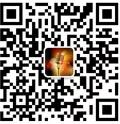新东方优美短文背诵 Unit36:Plate Tectonics and Sea-floor Sprea
新东方优美背诵短文50篇 Unit36:Plate Tectonics and Sea-floor Spreading
36.Plate Tectonics and Sea-floor Spreading
The theory of plate tectonics describes the motions of the lithosphere, the comparatively rigid outer layer of the Earth that includes all the crust and part of the underlying mantle. The lithosphere(n.[地]岩石圈)is divided into a few dozen plates of various sizes and shapes, in general the plates are in motion with respect to one another. A mid-ocean ridge is a boundary between plates where new lithospheric material is injected from below. As the plates diverge from a mid-ocean ridge they slide on a more yielding layer at the base of the lithosphere.
Since the size of the Earth is essentially constant, new lithosphere can be created at the mid-ocean ridges only if an equal amount of lithospheric material is consumed elsewhere. The site of this destruction is another kind of plate boundary: a subduction zone. There one plate dives under the edge of another and is reincorporated into the mantle. Both kinds of plate boundary are associated with fault systems, earthquakes and volcanism, but the kinds of geologic activity observed at the two boundaries are quite different.
The idea of sea-floor spreading actually preceded the theory of plate tectonics. In its original version, in the early 1960’s, it described the creation and destruction of the ocean floor, but it did not specify rigid lithospheric plates. The hypothesis was substantiated soon afterward by the discovery that periodic reversals of the Earth’s magnetic field are recorded in the oceanic crust. As magma rises under the mid-ocean ridge, ferromagnetic minerals in the magma become magnetized in the direction of the magma become magnetized in the direction of the geomagnetic field. When the magma cools and solidifies, the direction and the polarity of the field are preserved in the magnetized volcanic rock. Reversals of the field give rise to a series of magnetic stripes running parallel to the axis of the rift. The oceanic crust thus serves as a magnetic tape recording of the history of the geomagnetic field that can be dated independently; the width of the stripes indicates the rate of the sea-floor spreading.
板块结构与海床扩展
板块结构理论描述岩石圈的运动。岩石圈是相对坚硬的地球外层,包括全部地壳和部分地幔。
岩石圈被划分为几十个大小不同形状各异的板块,一般而言这些板块都处于相对运动之中。一道中海脊是板块之间的边界,在那里新的岩石圈的物质从下部注入。
当板块从中海脊脱离时,它们滑向在岩石圈基部较易变形的地层上。因为地球的大小本质上是不
变的,只有同等数量的岩石圈物质在其它地方被吞没,新的岩石圈才能生成。销毁旧岩石
圈的地方形成另外一种板块边界:一块潜没的区域。在这里,一块板块潜没到另一板块的边缘之下并结合入地幔之中。
两种板块边界均与地层系统、地震以及火山活动有关,但在两种边界处观察到的诸般地质活动却迥然不同。海床扩展说实际上早于板块结构理论。在
20世纪60年代它的理论雏形中,描述了海底的生成和毁灭,但没有详细介绍坚硬的岩石圈板块。这个假定不久之后为发现所证实。
该发现表明地球磁场周期性的逆转被记录在海洋地壳中。当岩浆从中海脊下涌起的时候,岩浆中的磁铁矿物质按地磁场的方向被磁化。岩
浆冷却并凝固下来后,地磁场的方向和磁极被保留在磁化了的火山岩中。磁场的逆转形成一系列与断层轴线平行的条形磁区。
这样海洋壳就扮演了磁带的角色,记录下可以鉴定时间的地磁场的历史。条形磁区的宽度表明了海底扩展的速度。
NSDA“SDcamps”全国英语演讲与辩论大赛(大学组)/SDcamps全国中小学生英语演讲与辩论大会(中小学及幼儿组)/美式辩论赛(以下简称大赛/大会)现诚招全国省市合作伙伴或城市合伙人,共同进行推广NSDA赛事品牌、举办赛事及培训活动、开展素质教育、美式营地项目等多方面合作。
我们希望认同NSDA理念,有赛事组织经验,或有教育资源,特别是有理想有热情的机构或个人一起携手,共同推广NSDA品牌、赛事及素质教育。以机构的形式,或以城市合伙人的方式均可。具体的赛事组织、盈利模式,欢迎电话或微信咨询。
微信:0012133598196
